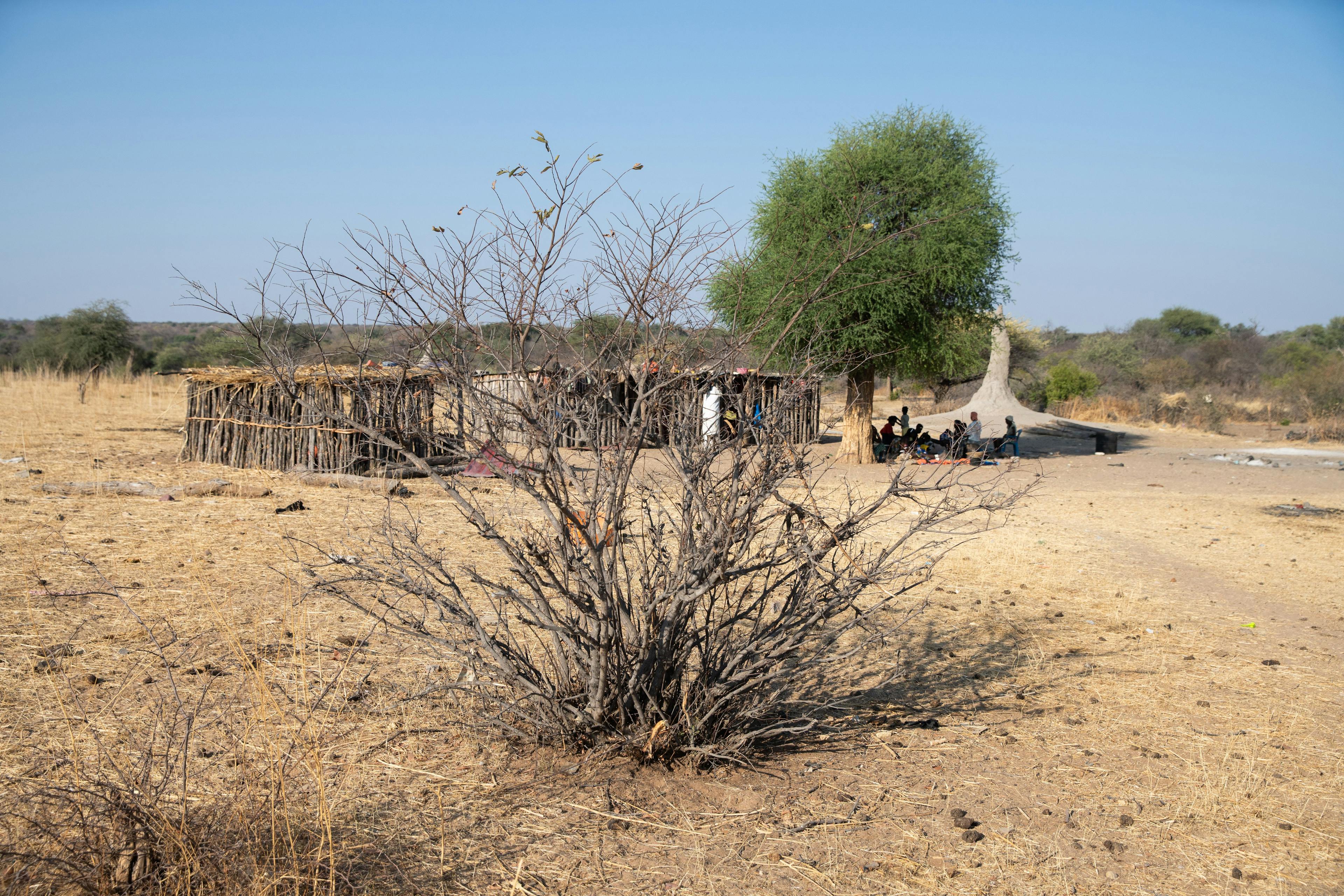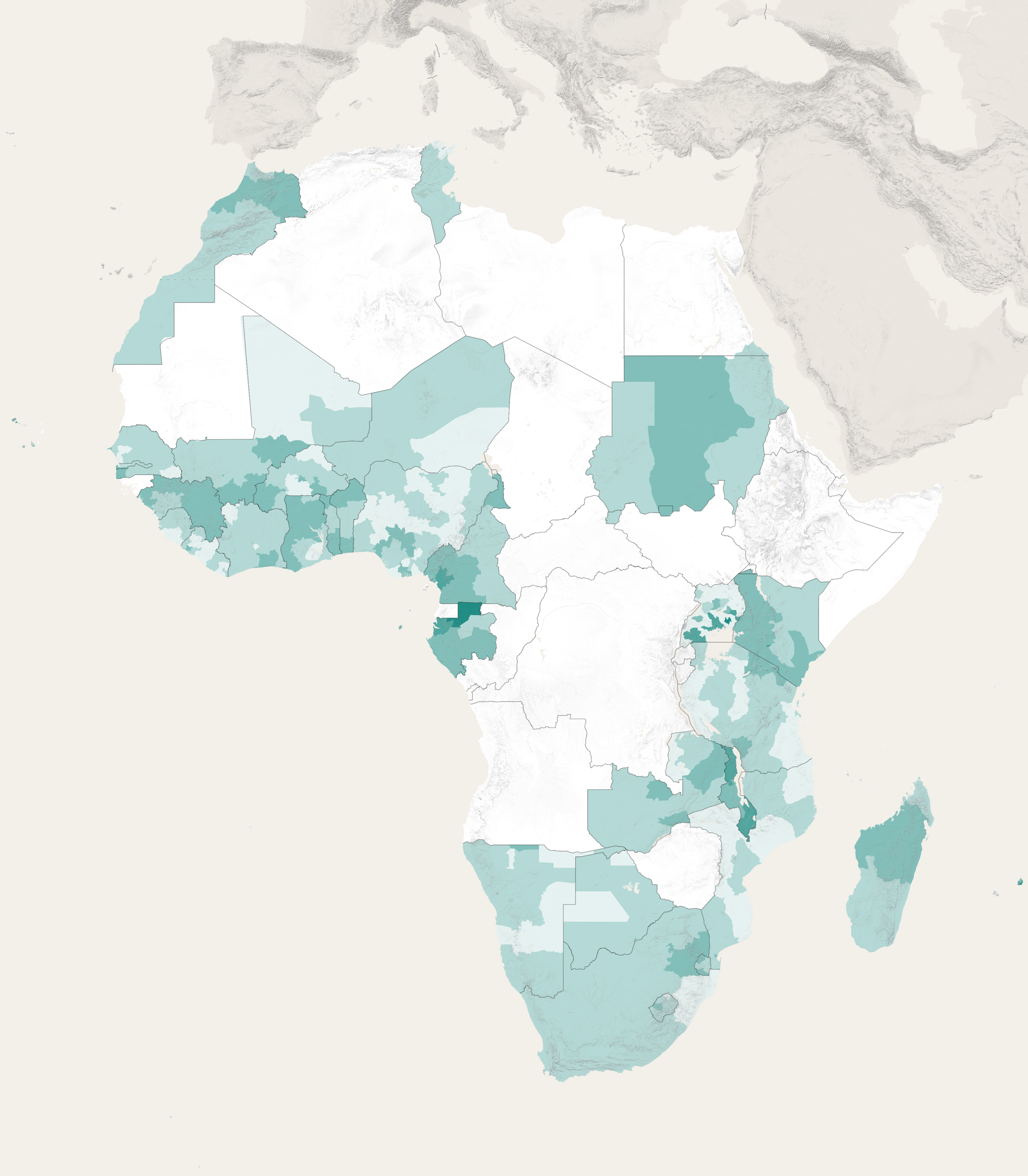Voices from thefrontlines
Climate change is reshaping our world and exposing Africans, across the continent, to increased hardship. How can its people be empowered to face climate shocks and stressors and make informed decisions to move or stay now and in the future?

Lay of the Land • 2.1
DeepRoots
DeepRoots
Connected to Land, Culture, Community
Introduction
Africans are attached to their land, community, and way of life. Most want to stay close to home. For those who move, climate impacts are rarely the only reason. Those who cannot move may face even greater risk.
A significant part of the population in the Nile delta will be exposed to sea level rise risk, including part of the 5.3 million people projected to live in Alexandria and surroundings by 2050. However, the majority of people might prefer to stay due to their ties to the land or the means they might lack to move and start over in a different location.

The climate crisis is here, yet most Africans are neither moving nor planning to move
Across the continent – from the coastal communities of Alexandria to the bustling settlements of Lagos, and from rural villagers in Karamoja to the new arrivals in growing towns in Angola and Malawi – people feel a strong sense of belonging to their local community. They experience the growing severity of climate change, yet their livelihoods – such as fishing or herding – depend on the land and the sustainability of their local ecosystems. People remain in areas afflicted by frequent flooding or prolonged droughts, even if it feels as though their land has become ‘cursed’. Within a year of Cyclone Idai devastating the city of Beira in March 2019, displaced people who had resettled further inland returned to their old neighbourhoods, fishing and trading in the local market.
For most Africans interviewed by the ACMI, coping with climate change means finding solutions to resume their way of living after climate disruption. They may take on longer working hours, explore diversifying ways of earning income, or even cut down on meals. In other words, their first or preferred response to climate stressors is to remain home.
Figure 1
Even though they suffer from climate disruptions, most people do not consider moving; 23% lack the means to move even if they want to.
Survey question: When thinking about mobility, which of the following applies to you as an individual?
Source: ACMI Case Studies Survey data, 2022. Based on survey from 6 locations in Africa. Over 100 households surveyed, 2.9% responded with don’t know or refused.
When people want to move, climate stress is rarely the only reason
Usually, climate factors add to other reasons that make people want to move, such as their economic situation, hopes for a better education, the reassurance of relatives who have already moved, or concerns about their safety. Climate impacts emerge as a decisive factor in people’s mobility, when sudden events, such as a massive storm, force them to evacuate to avoid being hit. They also feature more prominently among people’s motivations for moving in areas that have been exposed repeatedly to climate hazards, such as alternating droughts and floods.
Figure 2
Climate risks feature more prominently in people’s decisions to move when they live in areas that have been hit by extreme events, such as the cyclones that have affected Mozambique.
Survey question: What are the reasons for moving?
Percentage of respondents per reason per location
Economic factors
Climate factors
Source: ACMI Case Studies Survey data, 2022
People decide to stay or move without always understanding climate risks
Africans experience the threats brought on by climate change in their daily lives. Yet, not everyone understands its human causes and the worsening trend in impacts. Across 33 African countries where data is available, the share of people who understand climate change as a human-made phenomenon ranges from 23 to 66 percent of the population, compared to an average of 80% in Europe. In general, the more educated, urban, and mobile Africans are more climate literate, while impoverished communities and women show lower levels of awareness. A lack of climate literacy could lead to inaction and reactive, rather than anticipatory, coping responses. This makes effective adaptation more difficult, if not impossible, for those who are already disadvantaged and compounds their vulnerability to climate change.
Figure 3
Raising climate change literacy rates at the continent level will contribute to safer and more informed personal choices when addressing climate risks.
Climate change literacy rates per region
0–20%
20–40%
40–60%
60–80%
80–100%
Unknown

Source: Simpson et al. 2021
Not everyone who wants to move, can
Climate impacts could make moving harder and leave impoverished and otherwise vulnerable people stranded. People may aspire to move, but many lack the resources and connections to follow through. Factors that enable people to embrace mobility include having an education, assets, or transferable skills that are not tied to a specific resource or occupation. It also helps if people have ties to someone who has already moved. Those who lack these advantages may be forced to temper their aspirations. For many, moving seems simply too risky, whether due to a perceived lack of physical security or of opportunities to access land, jobs, and services in potential destinations.
Those who are left behind
The Intergovernmental Panel on Climate Change (IPCC) finds that across low-income countries, high temperatures slow migration rates. As climate impacts make living conditions more difficult and erode people’s assets, the most vulnerable groups and individuals – particularly those with low income and education, rural households, older people, people with disabilities and women – could become stranded.
The Way Forward
By planning for climate mobility, Africa’s leaders can mitigate human, economic and social disruptions. Climate stressors will continue to increase, but climate vulnerabilities on the continent need not, provided strategies are developed to harness the movement of people for adaptation and resilience-building.
This would ensure that people have access to safe options for movement, can settle in less risk-prone locations and contribute to their home and adopted communities. Greater climate awareness – both of today’s changing conditions, and future risks – can help people make more informed decisions about whether and when to stay or leave, for how long, and where to go. Social protection programmes can lower climate vulnerability and address inequalities that limit people’s ability to exercise agency over mobility decisions.
In places where long-term adaptation to climate impacts is unlikely, supporting people’s ability to move can prevent loss and damage. This can be done by planning early for the relocation of households or whole communities, giving people time to buy in, and including justice considerations in the process. Proper planning can improve the reception conditions in potential destination areas, benefiting those who move, their families, and populations in receiving communities.
